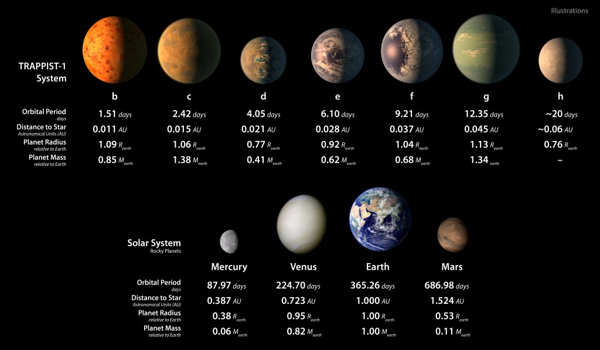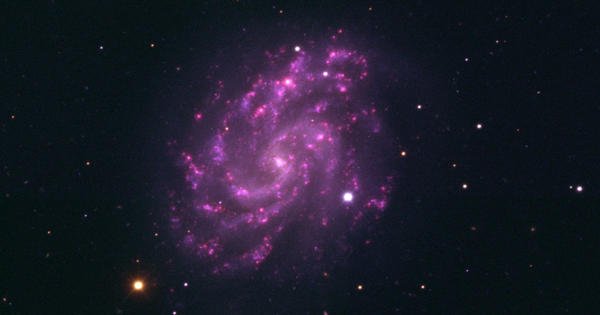Some exoplanet searches may overlook nearly half of the Earth-sized planets orbiting other stars. New research from the international Gemini Observatory and the WIYN 3.5-meter telescope at Kitt Peak National Observatory suggests that Earth-sized worlds may be lurking undiscovered in binary star systems, hidden in the glare of their parent stars. Because roughly half of all stars are in binary systems, astronomers may be missing many Earth-sized worlds.
Earth-sized planets could be far more common than previously thought. Astronomers at NASA Ames Research Center used the twin telescopes of the international Gemini Observatory, a program of the National Science Foundation’s NOIRLab, to determine that many of the planet-hosting stars identified by NASA’s TESS exoplanet-hunting mission are actually pairs of stars known as binary stars, with planets orbiting one of the stars in the pair. After examining these binary stars, the team concluded that Earth-sized planets in many two-star systems may go unnoticed by transit searches such as TESS, which look for changes in a star’s light when a planet passes in front of it. The light from the second star makes it more difficult to detect the changes in the host star’s light when the planet transits.
The team began by attempting to determine whether some of the TESS-identified exoplanet host stars were actually unknown binary stars. Physically close-together stars can be misidentified as single stars unless observed at extremely high resolution. So the team used both Gemini telescopes to examine a sample of exoplanet host stars in great detail. The astronomers set out to see if they could spot undiscovered stellar companions using a technique known as speckle imaging.
International Gemini Observatory and the WIYN 3.5-meter telescope at Kitt Peak National Observatory suggest that Earth-sized worlds could be lurking undiscovered in binary star systems, hidden in the glare of their parent stars.
The team observed hundreds of nearby stars identified as potential exoplanet hosts by TESS using the ‘Alopeke and Zorro instruments on the Gemini North and South telescopes in Chile and Hawai’i, respectively. They discovered that 73 of these stars are actually binary star systems that appeared as single points of light until they were observed with Gemini at higher resolution. “We obtained extremely high-resolution images of exoplanet host stars and detected stellar companions at very small separations using the Gemini Observatory’s 8.1-meter telescopes,” said Katie Lester of NASA’s Ames Research Center, who led this work.
Lester’s team also used the NN-EXPLORE Exoplanet and Stellar Speckle Imager (NESSI) on the WIYN 3.5-meter telescope at Kitt Peak National Observatory, which is also a Program of the NSF’s NOIRLab, to study an additional 18 binary stars previously discovered among the TESS exoplanet hosts.
The team compared the sizes of the detected planets in binary star systems to those in single-star systems after identifying the binary stars. They realized that while the TESS spacecraft discovered both large and small exoplanets orbiting single stars, it only discovered large planets in binary systems.

These findings imply that a population of Earth-sized planets could be lurking in binary systems and going undetected by TESS and other planet-hunting telescopes using the transit method. Some scientists suspected that transit searches were missing small planets in binary systems, but the new study provides observational support for this theory and demonstrates which sizes of exoplanets are affected.
“We’ve shown that finding Earth-sized planets in binary systems is more difficult because small planets get lost in the glare of their two-parent stars,” Lester explained. “Their transits are ‘filled in’ by the light from the companion star,” explained Steve Howell of NASA’s Ames Research Center, who leads the speckle imaging effort and was involved in this study.
“Because roughly half of the stars are in binary systems, we may be missing out on the discovery and study of many Earth-like planets,” Lester concluded.
Because of the possibility of these missing worlds, astronomers will need to employ a variety of observational techniques before concluding that a particular binary star system lacks Earth-like planets. “Astronomers need to know whether a star is single or binary before they can say there are no small planets in that system,” Lester explained. “If it’s the only one, you could argue that no small planets exist. However, if the host is in a binary system, it is impossible to tell whether a small planet is hidden by the companion star or does not exist at all. More observations using a different technique would be required to determine this.”
Lester and her colleagues examined how far apart the stars are in the binary systems where TESS detected large planets as part of their research. The team discovered that the stars in exoplanet-hosting pairs were typically further apart than binary stars without planets. This could imply that planets do not form in the vicinity of stars with close stellar companions.
“This speckle imaging survey demonstrates the critical need for NSF telescope facilities to characterize newly discovered planetary systems and develop our understanding of planetary populations,” said Martin Still, Program Officer for the National Science Foundation Division of Astronomical Sciences.
“This is a major finding in exoplanet work,” Howell commented. “The results will help theorists create their models for how planets form and evolve in double-star systems.”
















